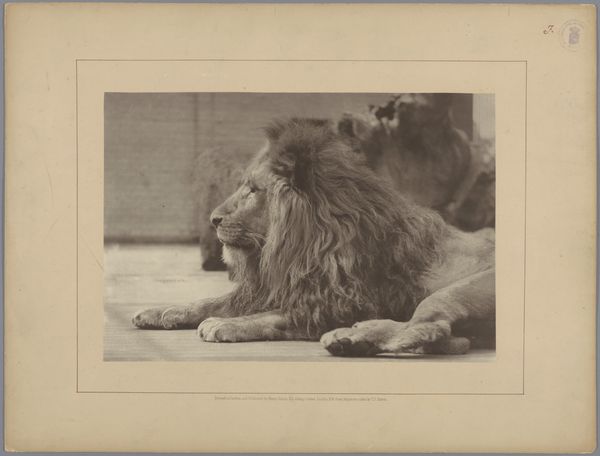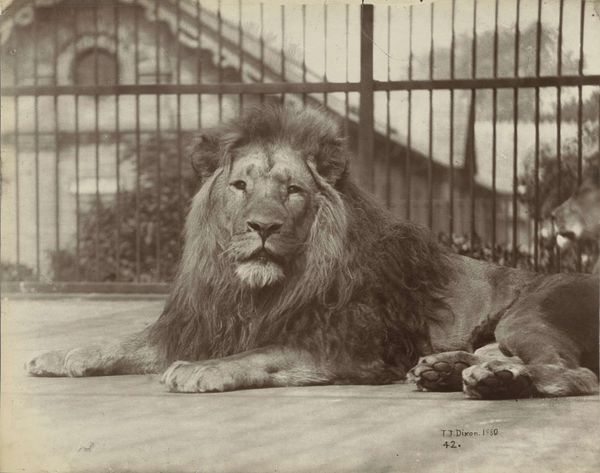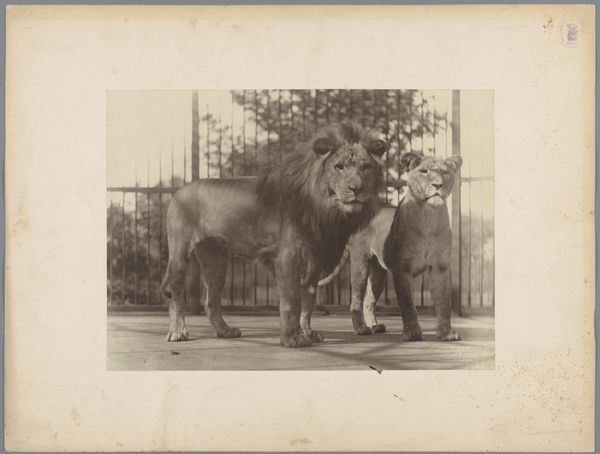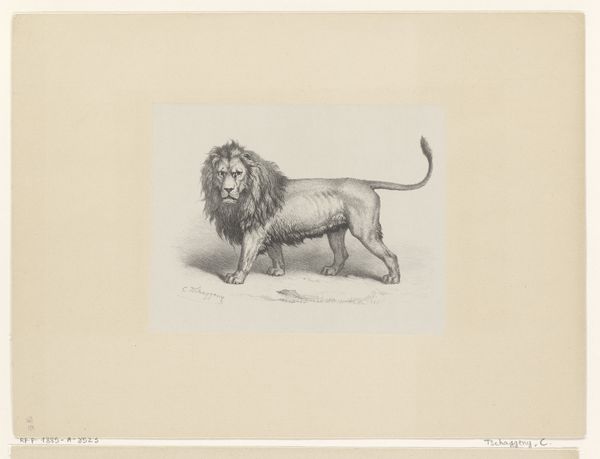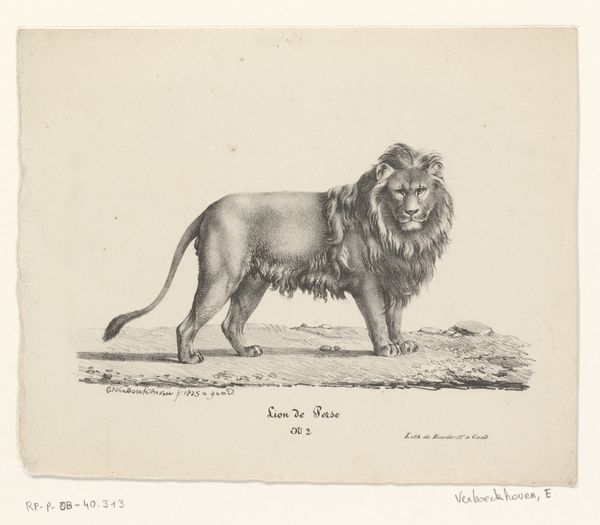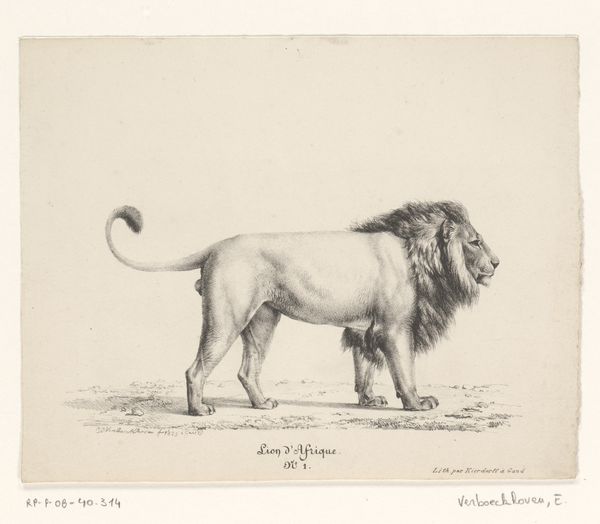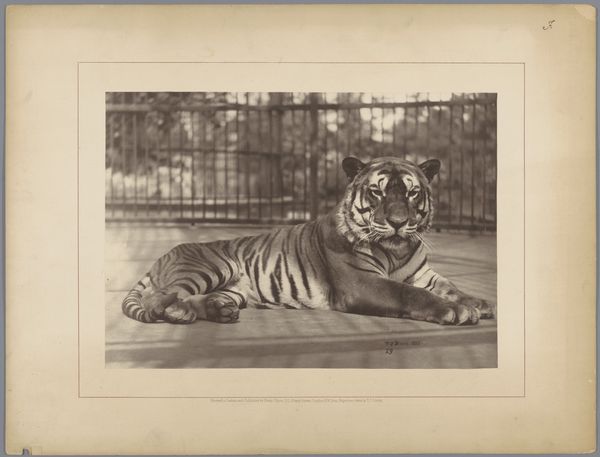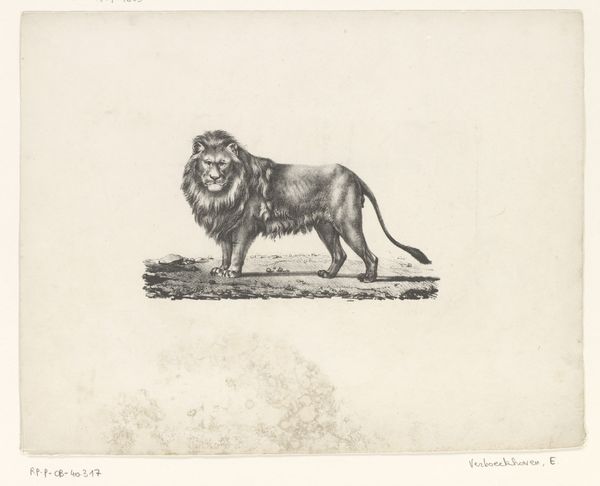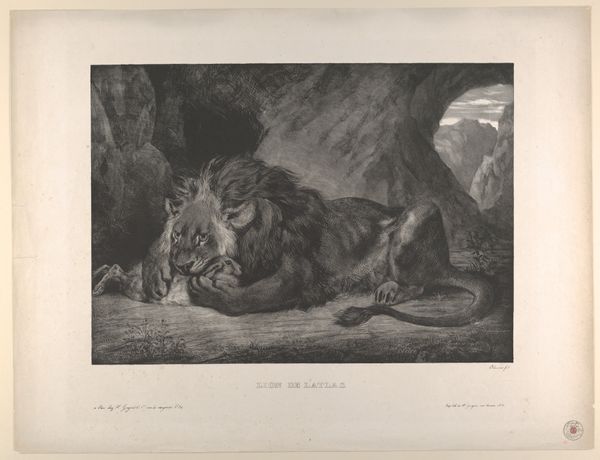
photography, gelatin-silver-print
#
portrait
#
photography
#
gelatin-silver-print
#
realism
Dimensions: height 250 mm, width 359 mm
Copyright: Rijks Museum: Open Domain
Editor: This gelatin-silver print from around 1879, titled "Lion in a Zoo in London," by Thomas James Dixon, it's... surprisingly sad. The lion looks so defeated behind those bars. What's your take on it? Curator: It’s a potent image, isn’t it? The photograph serves as a document of empire, and it makes visible some of its less savory implications. We must recognize that this image is not simply a portrait of an animal. Consider the act of capturing and displaying this lion within a zoo: What does it say about Victorian attitudes toward nature, domination, and the exoticization of other cultures and places? Editor: I hadn’t thought about it that way. So, the zoo itself is symbolic? Curator: Exactly! It embodies a colonial mindset. Zoos were often extensions of imperial power, places where colonizers showcased their control over the natural world. What does it mean to remove this animal from its native habitat and place it in a cage for human consumption? Can you see the connection to larger issues of exploitation and the disruption of ecosystems and social structures during that era? Editor: It's heartbreaking when you frame it like that. The lion’s passivity now reads less like contentment and more like resignation to his fate. Curator: Precisely. And how might this photograph’s realism, a seemingly objective rendering, actually reinforce dominant ideologies? Photography was then emerging as a powerful tool, with which colonial narratives and power structures could be advanced. Editor: It gives me a lot to consider regarding visual language. Thanks for making this photo far more insightful than I had imagined. Curator: It’s crucial to examine how artworks, even those seemingly straightforward, reflect and shape our understanding of complex social issues and power dynamics. Thank you for helping reveal those ideas through your response to the work.
Comments
No comments
Be the first to comment and join the conversation on the ultimate creative platform.
